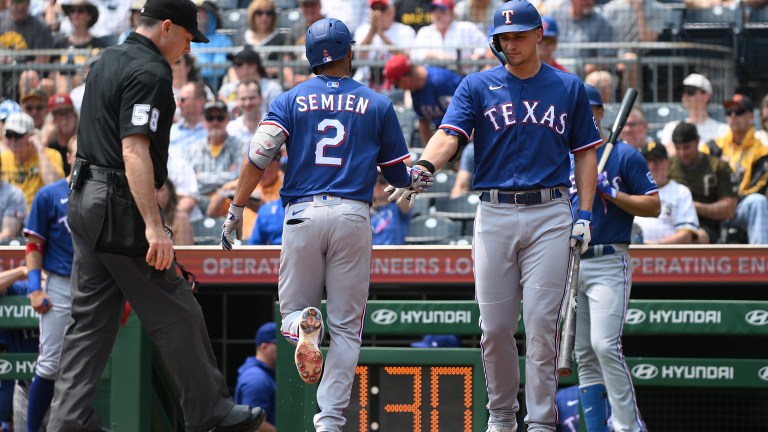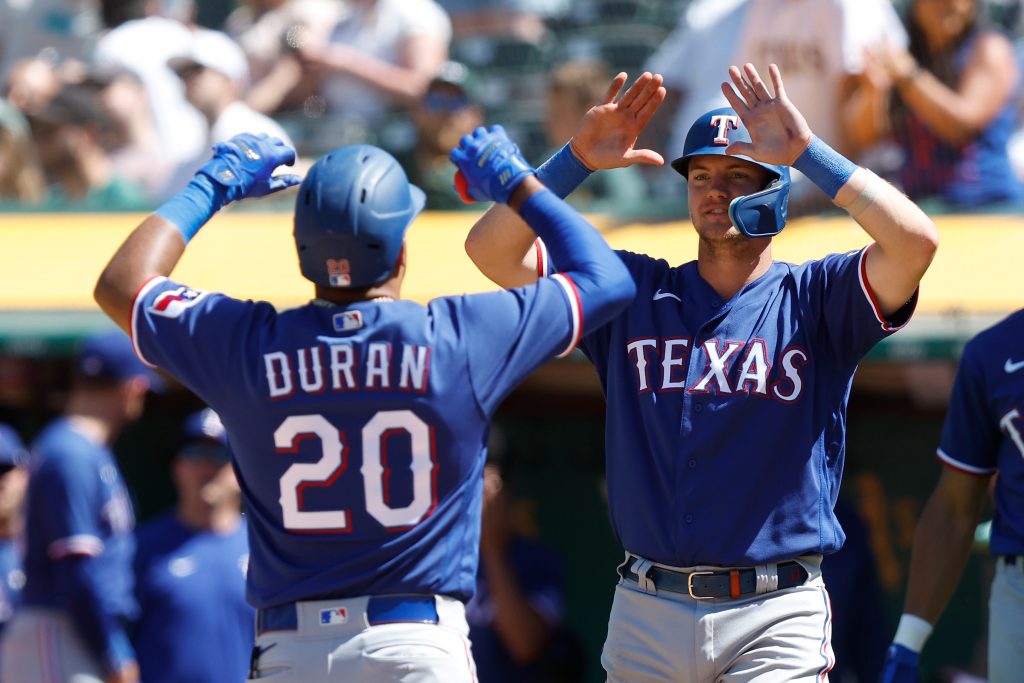The Biggest Run Differential Surprises So Far in 2023
Run differential can reveal some pretty cool insights about the standings as we pass the halfway point in season.

With the season halfway done and the trade deadline rapidly approaching, we’ve finally reached the point in the year where the standings really matter. That’s not to say the games in the summer are any more important than the games in the spring, but there’s a big difference between being the worst team in your division at the end of April and the worst team in your division at the All-Star break.
At the same time, 80-something games is still a small sample of the full 162-game season; there’s a reason the MLB calendar is twice the length of the NBA and NHL campaigns. After 80 or so games, there are still talented teams with losing records and less talented clubs making noise in the postseason race.
For that reason, it’s imperative to look beyond wins and losses when evaluating teams. Indeed, at this point in the year, run differential can be a stronger predictor of a team’s rest-of-season performance than their actual record to date.
With that in mind, I want to take a look at some of the biggest run differential surprises in baseball right now. We’re all familiar with the biggest storylines in the standings (Rangers good! Cardinals bad!), but what can we learn from runs scored and runs allowed?
The San Diego Padres, +30 Run Differential

No one can deny the 2023 Padres have been disappointing. They were preseason favorites to win the NL West (and possibly the World Series), but three months later, their chairman had to make an official proclamation that they wouldn’t be selling at the trade deadline.
However, the Padres’ run differential tells a very different story than their win-loss record. They’ve allowed the fewest runs in the NL West and the second-fewest in the National League. By run differential, they’re outperforming every team in the NL Central and every team except the Braves in the NL East.
Indeed, by this metric, the Padres have been the tenth-best team in baseball. They’re one solid win away from moving up to seventh. In other words, the Dads are playing much better baseball than their 39-46 record would have you believe.
So what’s gone wrong? For one thing, they’re 5-15 in one-run games and 0-7 in extra innings. A bad record in close games can be an indication of an unreliable bullpen, but San Diego’s relievers have the second-lowest ERA in the NL. Therefore, this just seems like a matter of bad timing.
The Padres also have the seventh-best record in the NL against opponents above .500, but the worst record in the league against opponents below .500. Once again, the evidence points to poor timing. That sounds like a lame excuse, but sometimes it’s just the truth.
This team hasn’t been the powerhouse many of us thought it would be. At the same time, the Padres haven’t been nearly as awful as you might think.
The NL Central

The NL Central is the only division in which the run differential leader isn’t in first or second place.
It’s also the only division in which the leader has a negative run differential.
And the only division without a 100-run gap between the best and worst teams.
And the only division where the team with the worst run differential isn’t in last place.
The NL Central is weird.
Here’s how the division shakes out by win-loss record:
| Team | Wins | Losses | Winning% | GB |
| Cincinnati Reds | 46 | 39 | .541 | – |
| Milwaukee Brewers | 46 | 39 | .541 | – |
| Pittsburgh Pirates | 39 | 45 | .464 | 6.5 |
| Chicago Cubs | 38 | 45 | .458 | 7 |
| St. Louis Cardinals | 35 | 49 | .417 | 10.5 |
And here’s how it shakes out by run differential:
| Team | Runs Scored | Runs Allowed | Differential |
| Chicago Cubs | 381 | 359 | +22 |
| Milwaukee Brewers | 356 | 370 | -14 |
| Cincinnati Reds | 421 | 440 | -19 |
| St. Louis Cardinals | 387 | 412 | -25 |
| Pittsburgh Pirates | 355 | 395 | -40 |
The fourth-place Cubs are the only team with a negative run differential. They’re 36 runs ahead of the Brewers and 41 ahead of the Reds. That’s bigger than the gap between the Dodgers and Padres or the Yankees and Red Sox.
According to Pythagorean win-loss expectation, a simple formula that derives a team’s expected winning percentage from their run differential, Chicago should be four games ahead of Milwaukee and Cincinnati. Instead, the Cubs are seven games back and contemplating selling at the deadline. Woof.
The Texas Rangers, +155 Run Differential

The Rangers are the real deal.
For two months now, we’ve been waiting for them to come down to earth, and it just hasn’t happened. Instead, they’re winning ballgames by scoring more runs than they allow. It’s the simple trick that dermatologists other baseball teams absolutely hate.
The Texas Rangers have scored 505 runs this season, the most in baseball. They’ve given up 350. That’s a difference of 155 runs, or 1.82 per game. No other team – not the Rays, nor the Braves, nor anyone else – is outscoring their opponents by so much.
The Rangers’ Pythagorean record (56-29) is even better than their actual record (50-35). This team is playing at a 95-win pace, but their run differential suggests they should be playing at a 106-win pace. That’s ridiculous. Ludicrous. Preposterous. What?
The only team with a bigger gap between their expected record and actual record is the Padres. San Diego is also the only team with a worse record in one-run games. In other words, the Rangers are one of the best teams in baseball, and they might not even be playing up their full potential.
By this point, you probably knew the Rangers were exceeding expectations. You probably knew their playoff odds were rising fast. But unless you were looking at run differential, you probably didn’t know just how dominant the ballclub from Arlington has become.
